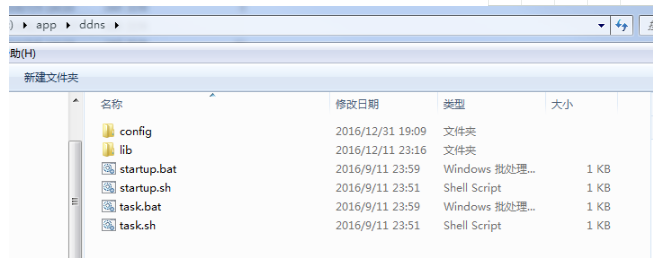更新時間:2021-07-14 16:53:15 來源:動力節(jié)點 瀏覽1829次
| 目錄 | 備注 |
| ${basedir} | 存放 pom.xml和所有的子目錄 |
| ${basedir}/src/main/resources | 項目的資源,如spring配置文件,properties資源文件等 |
| ${basedir}/src/main/webapps | web項目特有 |
| ${basedir}/src/test/java | 項目的測試類,比如說 JUnit代碼、TestNg代碼 |
| ${basedir}/src/test/resources | 測試代碼使用的資源 |
插件一maven-resources-plugin
Maven可以區(qū)別對待Java代碼文件和資源文件,默認(rèn)的主資源文件目錄是src/main/resources,我們可以通過這個插件實現(xiàn)資源文件過濾。資源文件過濾的意思是指我們可以在資源文件里用使用占位符${propertyName},然后開啟對資源文件的過濾,pom.xml里再統(tǒng)一設(shè)置所有{propertyName}對應(yīng)的值,就可以在構(gòu)建過程中將值替換掉資源文件中對應(yīng)的${propertyName},實現(xiàn)了代碼配置分離、做到了參數(shù)的統(tǒng)一維護。
<resources>
<resource>
<directory>src/main/resources</directory>
<includes>
<include>properties/*.properties</include>
</includes>
<filtering>true</filtering>
</resource>
<resource>
<directory>src/main/resources</directory>
<includes>
<include>*.xml</include>
<include>mapper/**/*.xml</include>
<include>mysqlMapper/**/*.xml</include>
<include>*.properties</include>
</includes>
</resource>
</resources>
……
<properties>
<runtime.env>local</runtime.env>
</properties>
我們的主應(yīng)用集成后,會根據(jù)實際要求部署到不同的環(huán)境中,比如聯(lián)調(diào)環(huán)境、測試環(huán)境、壓力環(huán)境、預(yù)發(fā)布環(huán)境、生產(chǎn)環(huán)境等,而這些環(huán)境上的資源配置信息顯然是不一樣的,針對每套環(huán)境,每個具體占位符${propertyName}都會有不同的值,而這種場景可以使用Maven的profile來支持,每個profile都可以獨立維護一套參數(shù)值,在mvn package的時候靈活指定;此外,maven也支持在package的時候指定多個profile,這個特性在執(zhí)行自動部署的時候特別有用。使用這個插件,我們的項目可以做到多環(huán)境支持,參考命令
mvn package -Pnocheck,env-test
<profiles>
<profile>
<id>nocheck</id>
<properties>
<skipTests>true</skipTests>
<checkstyle.skip>true</checkstyle.skip>
<license.skip>true</license.skip>
<notice.skip>true</notice.skip>
<versions.skip>true</versions.skip>
</properties>
</profile>
<profile>
<!-- 本地環(huán)境,默認(rèn)是windows -->
<id>local</id>
<activation>
<activeByDefault>true</activeByDefault>
</activation>
<properties>
<runtime.env>local</runtime.env>
</properties>
</profile>
<profile>
<id>env-test</id>
<properties>
<runtime.env>env-test</runtime.env>
</properties>
</profile>
</profiles>
插件二maven-jar-plugin
當(dāng)我們將項目模塊化后,有一些通用的資源文件基本上大多數(shù)模塊都會用到,比如log4j.properties,jdbc.properties等,模塊中有了這些資源文件,我們才能單獨對該模塊進行開發(fā)、調(diào)試。默認(rèn)情況下maven-jar-plugin會將這些資源文件全部package成一個jar包進行發(fā)布,如果這樣的jar包集成到一個主應(yīng)用中部署,運行,很可能導(dǎo)致主應(yīng)用的配置不生效,我稱之為配置混亂,為了解決這個問題,可以開啟maven-jar-plugin的排除功能,在執(zhí)行mvn package之前排除指定的資源文件。
示例用法
<plugin>
<groupId>org.apache.maven.plugins</groupId>
<artifactId>maven-jar-plugin</artifactId>
<configuration>
<excludes>
<exclude>applicationContext.xml</exclude>
<exclude>properties/**</exclude>
<exclude>log4j.properties</exclude>
</excludes>
</configuration>
</plugin>
插件三maven-war-plugin
項目如果是web主應(yīng)用,我們可以使用maven-war-plugin來對webapps下各類文件進行過濾。用法參考maven-resources-plugin
<plugin>
<groupId>org.apache.maven.plugins</groupId>
<artifactId>maven-war-plugin</artifactId>
<configuration>
<warName>demo-Rest</warName>
<webResources>
<resource>
<directory>src/main/webapp/WEB-INF</directory>
<filtering>true</filtering>
<targetPath>WEB-INF</targetPath>
<includes>
<include>web.xml</include>
</includes>
</resource>
</webResources>
</configuration>
</plugin>
插件四properties-maven-plugin
隨著項目的不斷迭代,我們的資源配置項將會變得更多,這個會直接影響到pom.xml的體積膨脹;此外,如果項目目標(biāo)部署環(huán)境比較多,pom.xml將會膨脹得更快,更加難以維護。為了解決這個問題,我們需要將這些配置信息獨立出來,并按照不同環(huán)境進行歸類,使用properties-maven-plugin就會達到這個效果。
示例用法(將每個環(huán)境的信息放在不同的目錄下,然后在mvn package切換不同的profile實現(xiàn)去指定目錄讀取配置信息,用讀取到的value去替換資源配置文件的占位符)
<plugin>
<groupId>org.codehaus.mojo</groupId>
<artifactId>properties-maven-plugin</artifactId>
<version>1.0.0</version>
<configuration>
<files>
<file>profiles/${runtime.env}/jdbc.properties</file>
<file>profiles/${runtime.env}/redis.properties</file>
<file>profiles/${runtime.env}/batch.properties</file>
<file>profiles/${runtime.env}/config.properties</file>
</files>
</configuration>
<executions>
<execution>
<phase>initialize</phase>
<goals>
<goal>read-project-properties</goal>
</goals>
</execution>
</executions>
</plugin>
插件五maven-assembly-plugin
Java項目中有一種類型的主應(yīng)用,是需要獨立部署在后臺啟動的,比如socket服務(wù)程序,比如定時調(diào)度程序,比如dubbo服務(wù)程序,這些程序理論上只需要執(zhí)行一個簡單的java命令即可;稍微復(fù)雜一些的,我們可以規(guī)范一下自己的主應(yīng)用結(jié)構(gòu),定義配置文件夾和依賴庫文件夾,再準(zhǔn)備啟動的批處理腳本sh或bat文件即可。使用maven-assembly-plugin就可以達到這種效果。
<plugin>
<groupId>org.apache.maven.plugins</groupId>
<artifactId>maven-assembly-plugin</artifactId>
<configuration>
<appendAssemblyId>false</appendAssemblyId>
<descriptors>
<descriptor>target/classes/package.xml</descriptor>
</descriptors>
</configuration>
<executions>
<execution>
<id>make-assembly</id>
<phase>package</phase>
<goals>
<goal>single</goal>
</goals>
</execution>
</executions>
</plugin>
附package.xml
<assembly
xmlns="http://maven.apache.org/plugins/maven-assembly-plugin/assembly/1.1.2"
xmlns:xsi="http://www.w3.org/2001/XMLSchema-instance"
xsi:schemaLocation="http://maven.apache.org/plugins/maven-assembly-plugin/assembly/1.1.2 http://maven.apache.org/xsd/assembly-1.1.2.xsd">
<id>package</id>
<formats>
<format>tar.gz</format>
</formats>
<includeBaseDirectory>true</includeBaseDirectory>
<fileSets>
<fileSet>
<directory>src/main/bin</directory>
<includes>
<include>*.sh</include>
<include>*.bat</include>
</includes>
<filtered>true</filtered>
<outputDirectory></outputDirectory>
<fileMode>0755</fileMode>
</fileSet>
<fileSet>
<directory>${basedir}/src/main/config</directory>
<includes>
<include>*.properties</include>
<include>log4j.xml</include>
</includes>
<outputDirectory>config</outputDirectory>
<filtered>true</filtered>
<fileMode>0644</fileMode>
</fileSet>
<fileSet>
<directory>${basedir}/src/main/config</directory>
<includes>
<include>log4j.dtd</include>
</includes>
<outputDirectory>config</outputDirectory>
<fileMode>0644</fileMode>
</fileSet>
</fileSets>
<dependencySets>
<dependencySet>
<outputDirectory>lib</outputDirectory>
<scope>runtime</scope>
<fileMode>0644</fileMode>
</dependencySet>
</dependencySets>
</assembly>
附示例生成的Java應(yīng)用結(jié)構(gòu)圖

插件六maven-shade-plugin
有時候,我們需要將所有配置文件和依賴庫文件全部放在一個jar包中,運維的同事只需要執(zhí)行java-jar batch.jar即可完成啟動。雖然使用maven-assembly-plugin也可以做到這一點,但是在讀取配置文件的時候有可能會遇到一些問題,這個時候,我們可能需要使用到maven-shade-plugin這個插件,經(jīng)筆者實踐按照如下示例用法配置確實可用;當(dāng)然本示例配置了mainClass,直接執(zhí)行java-jar batch.jar確實沒問題,但如果執(zhí)行java com.fastjrun.demospring4.BatchInit-classpath batch.jar也是可以的。
示例用法
<plugin>
<groupId>org.apache.maven.plugins</groupId>
<artifactId>maven-shade-plugin</artifactId>
<version>3.0.0</version>
<executions>
<execution>
<phase>package</phase>
<goals>
<goal>shade</goal>
</goals>
<configuration>
<finalName>batch</finalName>
<shadedArtifactAttached>true</shadedArtifactAttached>
<shadedClassifierName>jar-with-dependencies</shadedClassifierName>
<transformers>
<transformer
implementation="org.apache.maven.plugins.shade.resource.ManifestResourceTransformer">
<mainClass>com.fastjrun.demospring4.BatchInit</mainClass> </transformer>
<transformer
implementation="org.apache.maven.plugins.shade.resource.AppendingTransformer">
<resource>META-INF/spring.handlers</resource>
</transformer>
<transformer
implementation="org.apache.maven.plugins.shade.resource.AppendingTransformer">
<resource>META-INF/spring.schemas</resource>
</transformer>
<transformer
implementation="org.apache.maven.plugins.shade.resource.AppendingTransformer">
<resource>META-INF/spring.tooling</resource>
</transformer>
</transformers>
<filters>
<filter>
<artifact>*:*</artifact>
<excludes>
<exclude>META-INF/*.SF</exclude>
<exclude>META-INF/*.DSA</exclude>
<exclude>META-INF/*.RSA</exclude>
</excludes>
</filter>
</filters>
</configuration>
</execution>
</executions>
</plugin>
插件七versions-maven-plugin
當(dāng)項目模塊化后,我們會遇到一個問題,就是項目版本升級的時候,需要同時變更父模塊和所有子模塊中的版本號,而這是一個比較瑣碎且容易出錯的事情,還好maven考慮得很周到,提供了這樣一個插件,我們使用命令行就可以達到效果了。我們的項目視圖如下

參考命令如下
mvn versions:set -DnewVersion=1.2-SNAPSHOT
總結(jié)
本文匯總了常用的幾個插件及其用法,經(jīng)實踐,基于eclipse的kepler、luna版本都能很好支持maven-resources-plugin、maven-jar-plugin、maven-war-plugin和properties-maven-plugin使用,同時也支持profile的activeByDefault設(shè)置,研發(fā)同事在不需要任何調(diào)整的情況下就能直接開發(fā)、調(diào)試代碼,且在開發(fā)結(jié)束后,可以直接使用mvn命令打包,打出各個環(huán)境的部署程序。從開發(fā)、調(diào)試、測試、驗證到上線的整個過程,所有模塊的pom.xml直到下一個迭代變更版本前都不用修改,直接使用。
以上就是動力節(jié)點小編介紹的"Maven插件總結(jié)",希望對大家有幫助,想了解更多可查看Maven教程。動力節(jié)點在線學(xué)習(xí)教程,針對沒有任何Java基礎(chǔ)的讀者學(xué)習(xí),讓你從入門到精通,主要介紹了一些Java基礎(chǔ)的核心知識,讓同學(xué)們更好更方便的學(xué)習(xí)和了解Java編程,感興趣的同學(xué)可以關(guān)注一下。